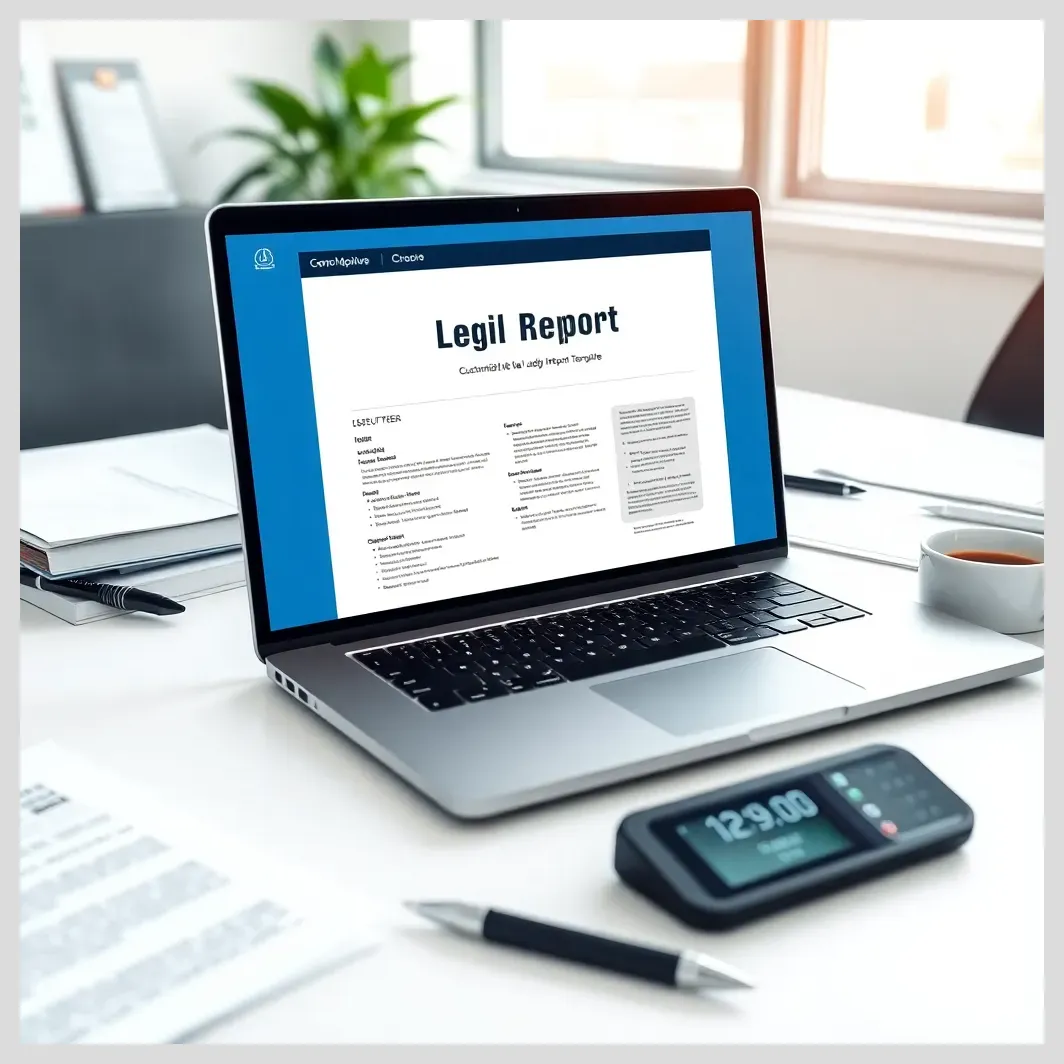In this article:
This article dives deep into the Sarbanes-Oxley Act and its impact on financial institutions, focusing on the critical role of IT audits in maintaining financial reporting accuracy and regulatory adherence. Readers will gain a clear understanding of the audit scope, key controls, compliance checklists, and how technology can streamline the entire process.
Key points covered include
- Understanding SOX and its relevance to financial institutions
- Core IT controls required for compliance
- Step-by-step SOX audit process tailored for financial firms
- Leveraging technology for efficient audits
- Risk management and internal controls assessment
- Common challenges and practical tips
- Expert insights and future trends in SOX auditing
Introduction to SOX Audit in the Financial Sector
The Sarbanes-Oxley Act (SOX) was enacted in 2002 as a response to major financial scandals that shook investor confidence and exposed weaknesses in corporate governance. Its primary goal is to enhance transparency, accountability, and accuracy in financial reporting, especially for publicly traded companies.
For financial institutions such as banks, insurance companies, and investment firms, SOX compliance is not just a regulatory obligation but a critical factor in maintaining trust with stakeholders and regulators. These organizations handle vast amounts of sensitive financial data, making robust internal controls and IT governance essential.
IT audits play a pivotal role in SOX compliance by evaluating the effectiveness of technology controls that safeguard financial information. They ensure that systems processing financial transactions are secure, changes are properly managed, and access is restricted to authorized personnel only.
This guide will provide a detailed roadmap to mastering the SOX audit process, focusing on the intersection of IT and financial controls. Readers will learn about key regulatory requirements, essential IT controls, audit methodologies, and how to leverage technology to simplify compliance efforts.
The Sarbanes-Oxley Act and Its Impact on Financial Sector IT Audits
The Sarbanes-Oxley Act includes several sections that directly affect financial institutions and their IT audit practices. Key provisions include
- Section 302: Corporate responsibility for financial reports, requiring senior executives to certify the accuracy and completeness of financial statements.
- Section 404: Management assessment of internal controls over financial reporting, mandating documentation and testing of controls.
- Section 906: Criminal penalties for false certifications by executives.
- Section 401: Enhanced disclosures in periodic reports.
- Section 802: Records retention requirements, emphasizing the preservation of audit-related documents.
- Section 806: Whistleblower protections to encourage reporting of fraudulent activities.
Regulatory oversight is primarily conducted by the U.S. Securities and Exchange Commission (SEC) and the Public Company Accounting Oversight Board (PCAOB). These bodies enforce compliance and set auditing standards.
SOX has fundamentally reshaped financial reporting by requiring companies to implement and maintain effective internal controls. For the financial sector, this means integrating IT governance with compliance efforts, as technology systems are central to processing and reporting financial information.
The intersection of SOX compliance and IT governance ensures that financial institutions not only protect data integrity but also maintain a transparent and auditable trail of financial activities.
Defining SOX Audit: Purpose, Scope, and Stakeholders
A SOX audit is a formal review process that assesses whether a company complies with the Sarbanes-Oxley Act’s requirements, focusing on the effectiveness of internal controls over financial reporting. The audit evaluates both financial and IT controls to ensure accuracy and prevent fraud.
Within SOX compliance, there is a distinction between the financial audit, which examines the accuracy of financial statements, and the IT audit, which assesses the controls over systems that process financial data.
Key stakeholders in a SOX audit include
- IT auditors, who evaluate the technical controls and security measures.
- Compliance officers, responsible for overseeing adherence to regulatory requirements.
- Senior management, accountable for certifying financial reports and ensuring control effectiveness.
- External auditors, who provide independent verification of compliance.
Failure to comply with SOX can lead to severe consequences, including financial penalties, reputational damage, and legal action. For financial institutions, non-compliance risks eroding investor confidence and regulatory sanctions.

Core IT Controls Required for SOX Compliance in Financial Institutions
Effective SOX compliance hinges on implementing robust IT controls that protect the integrity of financial data. The core controls include
Access Controls
Restricting system access to authorized personnel is fundamental. This involves
- Role-based permissions to ensure users have only the access necessary for their job functions.
- Multi-factor authentication to strengthen user verification.
- Privileged access management to monitor and control high-level system users.
Change Management Controls
All changes to financial systems must be documented, approved, and audited to prevent unauthorized modifications. This includes
- Formal change request processes.
- Approval workflows involving relevant stakeholders.
- Audit trails capturing who made changes and when.
Data Backup and Recovery Controls
Regular backups and tested disaster recovery plans ensure financial data can be restored in case of loss or corruption. Key practices include
 ISO 27001 Compliance Audit: Key Controls
ISO 27001 Compliance Audit: Key Controls- Scheduled backups stored securely offsite.
- Periodic recovery testing to validate backup integrity.
- Data integrity checks to detect corruption.
Segregation of Duties
Separating responsibilities reduces the risk of fraud by ensuring no single individual controls all aspects of a financial transaction. This involves
- Dividing roles such as authorization, custody, and record-keeping.
- Implementing oversight mechanisms to monitor compliance.
Security Controls
Protecting systems from unauthorized access and cyber threats is critical. Controls include
- Network security measures like firewalls and intrusion detection systems.
- Encryption of sensitive financial data at rest and in transit.
- Incident response plans to address security breaches promptly.
Continuous Monitoring and Logging
Maintaining detailed audit trails and real-time alerts helps detect anomalies and supports forensic investigations. This includes
- Comprehensive logging of user activities.
- Automated alerts for suspicious behavior.
- Regular review of logs to identify control weaknesses.
Comprehensive SOX Compliance Checklist for IT Auditors in the Financial Sector
IT auditors rely on detailed checklists to verify compliance with SOX Sections 302 and 404. A typical checklist includes
- Management accountability and certification Confirming executives sign off on financial reports.
- Formalized data security policies Ensuring documented policies govern data protection.
- Proof of compliance and audit readiness Maintaining evidence of control implementation and testing.
- Risk assessment and control evaluation Identifying and evaluating risks to financial reporting.
- Incident management and breach detection Procedures to detect and respond to security incidents.
Incorporating the COSO Framework principles helps align controls with recognized internal control standards. Software tools like ERP systems and GRC platforms facilitate control implementation, monitoring, and documentation.
Maintaining thorough documentation is essential. This includes control descriptions, test results, remediation plans, and evidence of management review.
Comparative Analysis of Leading SOX Compliance Tools for Financial Institutions
SOX Audit Process Flow for Financial Institutions
Summary
The comparative table highlights three leading SOX compliance tools, showing a range of features, usability, integration capabilities, and costs. ERP System A offers the most comprehensive features and strong integration but at a higher cost. GRC Platform B balances moderate usability with good integration and cost efficiency. Audit Management Software C is the most affordable and easiest to use but has limited integration. The SOX audit process flow visually outlines the eight critical phases, emphasizing a structured, risk-based approach to ensure effective internal controls and compliance. Together, these visuals provide a clear understanding of the tools and steps essential for successful SOX audits in financial institutions.
Step-by-Step SOX Audit Process Tailored for Financial Institutions
The SOX audit process involves several key phases
Planning and Scoping
Identify critical financial systems and relevant IT controls. Define audit objectives, scope, and resources.
Risk Assessment and Control Identification
Evaluate risks affecting financial reporting and identify controls mitigating those risks.
Control Design Evaluation and Documentation
Assess whether controls are properly designed to address identified risks. Document control processes and ownership.
Control Testing Methodologies
Perform walkthroughs, sample testing, and automated testing to verify control effectiveness.
Deficiency Identification and Classification
Classify control weaknesses as material weaknesses or significant deficiencies based on their impact.
Remediation Planning and Execution
Develop and implement plans to address identified deficiencies promptly.
Retesting and Validation
Verify that remediated controls operate effectively.
Reporting Results
Prepare reports for management and regulatory bodies, including SEC filings as required.
Leveraging Technology to Streamline SOX Compliance and IT Audits
Automation enhances SOX audit efficiency and accuracy by reducing manual effort and improving transparency. Key technology solutions include
- ERP Systems Integrate financial processes and controls.
- Governance, Risk, and Compliance (GRC) Platforms Centralize control management and documentation.
- Audit Management Software Facilitate planning, testing, and reporting.
Cloud security is a growing consideration, requiring controls that ensure data protection in cloud environments while maintaining SOX compliance.
Continuous controls monitoring and real-time dashboards provide ongoing visibility into compliance status, enabling proactive risk management.
Case studies show financial firms improving audit outcomes by adopting integrated compliance technologies, reducing errors, and accelerating reporting.
 Legal Audit Report Templates: Download and Customize
Legal Audit Report Templates: Download and Customize
Risk Management and Internal Controls Assessment in SOX Audits
A risk-based audit approach prioritizes controls based on their impact on financial reporting. Evaluating risks related to IT systems helps focus audit efforts where they matter most.
Aligning controls with the organization’s risk appetite ensures resources are efficiently allocated. Using risk and control libraries supports systematic assessment and documentation.
Best practices include maintaining detailed records of control deficiencies, remediation actions, and management reviews to support continuous improvement.
Regulatory Compliance and Documentation Best Practices
Maintaining organized and thorough documentation is critical for demonstrating SOX compliance. Records retention policies must align with Section 802 requirements, preserving audit evidence for mandated periods.
Auditor independence is essential to ensure objective assessments. Organizations must enforce policies preventing conflicts of interest.
Whistleblower protections under Section 806 encourage reporting of violations without fear of retaliation, strengthening compliance culture.
Preparing for external audits and SEC inspections involves regular internal reviews, mock audits, and readiness assessments to avoid surprises.
Benefits and Risks of SOX Audits in the Financial Sector
Benefits
Enhances transparency and accountability in financial reporting.
Strengthens IT controls protecting sensitive financial data.
Promotes risk management and internal control improvements.
Encourages adoption of technology for efficient audit processes.
Builds investor confidence and regulatory trust.
Risks
High costs and resource demands for maintaining compliance.
Complex IT environments and legacy systems complicate audits.
Cybersecurity threats pose risks to SOX controls.
Over-reliance on manual controls can lead to errors.
Poor communication between IT and finance teams hinders compliance.
Common Challenges and Pitfalls in SOX IT Audits for Financial Institutions
Financial institutions often face high costs and resource demands to maintain SOX compliance. Complex IT environments and legacy systems add to the challenge.
Continuous compliance requires adapting controls amid organizational changes, which can strain documentation and evidence collection.
 Legal and Regulatory Updates for IT Auditors
Legal and Regulatory Updates for IT AuditorsCybersecurity threats pose risks to SOX controls, necessitating vigilant monitoring and incident response capabilities.
Common pitfalls include over-reliance on manual controls, inadequate remediation, and poor communication between IT and finance teams.
Practical Tips and Common Errors to Avoid During SOX Audits
- Foster clear communication between IT, finance, and audit teams to align objectives and expectations.
- Avoid excessive dependence on manual controls; automate where possible to reduce errors.
- Address control deficiencies promptly to prevent escalation.
- Keep audit scope focused on material controls to optimize resources.
- Implement regular training and awareness programs to keep staff informed and engaged.
Opinions and Insights from Industry Experts on SOX Audits in the Financial Sector
Industry professionals emphasize the evolving nature of SOX audits, highlighting the increasing role of technology and data analytics. According to Hemant Patkar, a seasoned IT auditor, “Integrating continuous monitoring tools has transformed how we approach SOX compliance, making audits more proactive and less disruptive.”
Compliance officers stress the importance of management buy-in and cross-department collaboration to sustain effective controls.
Financial executives note that while SOX compliance can be resource-intensive, it ultimately strengthens corporate governance and investor confidence.
Comparative Analysis of Leading SOX Compliance Tools for Financial Institutions
| Tool | Features | Usability | Integration | Reporting | Approximate Cost |
|---|---|---|---|---|---|
| ERP System A | Financial controls, access management, change tracking | High | Strong with major financial platforms | Comprehensive dashboards | $50,000 – $150,000/year |
| GRC Platform B | Risk assessment, control library, audit workflow automation | Moderate | Integrates with ERP and ITSM tools | Customizable reports | $30,000 – $100,000/year |
| Audit Management Software C | Planning, testing, remediation tracking | Easy | Limited financial system integration | Standardized audit reports | $20,000 – $60,000/year |
Future Trends in SOX Auditing and Financial Sector Compliance
Emerging technologies like artificial intelligence, machine learning, and blockchain are poised to revolutionize SOX audits by enabling predictive analytics, enhanced fraud detection, and immutable audit trails.
Regulatory scrutiny is expected to intensify, with evolving standards emphasizing real-time compliance monitoring and cybersecurity integration.
Continuous auditing will become more prevalent, supported by automated controls and live dashboards, allowing financial institutions to respond swiftly to risks.
Summary and Key Takeaways for SOX Audit Success in Financial Institutions
Successful SOX audits rely on a systematic, risk-based approach that integrates robust IT controls with strong management accountability. Documentation and continuous improvement are vital to maintaining compliance.
Leveraging technology not only streamlines audit processes but also enhances transparency and control effectiveness. Financial institutions that embrace these principles position themselves for sustained regulatory compliance and stakeholder trust.
References and Further Reading
- Comprehensive Guide to SOX Compliance – Appsian Security
- SOX Audits: Requirements, Process & Best Practices – Exabeam
- SOX Compliance: The Ultimate Guide – Lumos
- Comprehensive Guide to SOX Compliance Requirements – NordLayer
- Sarbanes-Oxley Act (SOX) Overview – Imperva
- What Is SOX Compliance Auditing? – Diligent
- SOX Compliance Checklist & Requirements – Reco.ai
- SOX Compliance Guide for Financial Services – IronEdge Group
- How to Create a SOX Compliance Checklist – OwnData
- Guide on SOX Audit – Hemant Patkar
Frequently Asked Questions about SOX Audit in the Financial Sector
What is the primary goal of a SOX audit in financial institutions?
The primary goal is to ensure the accuracy and integrity of financial reporting by evaluating the effectiveness of internal controls, especially IT controls that support financial data processing.
How do IT controls support SOX compliance?
IT controls protect financial data by restricting access, managing changes, ensuring data backups, and monitoring security, thereby preventing errors and fraud in financial reporting.
What are the consequences of failing a SOX audit?
Consequences include financial penalties, reputational damage, increased regulatory scrutiny, and potential legal action against the company and its executives.
How often should SOX audits be conducted?
SOX audits are typically conducted annually, with ongoing monitoring and testing of controls throughout the year to maintain compliance.
Can automation replace manual SOX audit procedures?
Automation can significantly enhance efficiency and accuracy but cannot fully replace manual judgment and oversight, especially in complex control evaluations.
What role does management play in SOX compliance?
Management is responsible for designing, implementing, and certifying the effectiveness of internal controls and ensuring timely remediation of deficiencies.
How does SOX compliance improve financial reporting accuracy?
By enforcing rigorous controls and accountability, SOX compliance reduces errors and fraud, leading to more reliable and transparent financial disclosures.
What are the best practices for maintaining audit documentation?
Best practices include centralized storage, clear version control, timely updates, and adherence to retention policies to support audit readiness and regulatory inspections.
We invite you to share your thoughts, questions, or experiences related to SOX audits in the financial sector. What do you think about the challenges of maintaining compliance? How do you approach IT controls in your organization? Would you like to know more about specific audit tools or techniques? Feel free to comment below!









